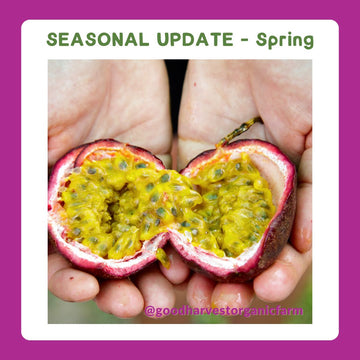Starting your autumn garden
Easter school holidays is the perfect time to get started growing your own veg! It’ll be a great project for the kids and get you ready to be harvesting your own veg late Autumn and early winter.
So, let’s get started!
Step 1: Location
Find the best spot for your garden, ideally 6-8 hours of sunlight a day. North facing aspect is great. You may like to go a raised bed for easy access, or in ground. Some of this will depend on your soil type and if you wish to bring in soil to get started.
Knowing your location, choose your garden size according to the time you have to manage it. We’d all love the big veggie garden supplying 80% of our produce, but growing well takes time. Its critical to ensure success by starting at a manageable size and workload. In some instances, this can simply mean a balcony planter or potato planter bag.
Step 2: Your soil & water
The make-or-break elements! Soil is a science lesson all to itself . Firstly, know your soil type as this will impact what you grow, as well as what you may need to add (compost etc).
If you’re into the science of it, get yourself a soil test, this is a great way to analyse the soil type and components of the soil that may help or hinder your success.
At this stage you’ll also want to start aerating the soil – use a broadfork or pitchfork to move the soil about and get the soil loose so it’ll accept natural composts and fertilisers more readily. Don’t leave the soil uncovered/exposed for too long.
We often recommend spending the most time in this stage, preparing the soil through adding compost as well as cover cropping before planting.
If you’re itching to get planting that’s ok too! You’ll be able to observe and learn throughout the garden to see what is working and what you might need to do differently next time.
Be sure that you have access to good quality water. Automated is best and is a good investment for long term success.
Step 3: What and how to grow
Now to decide what you’d like to grow! A quick online search will bring up a ton of resources to help you determine the best time of year for different produce. As Autumn finally appears, and things cool down, you’ll be able to grow a lot of different things.
Get your hands on some organic seeds – GreenHarvest are a good place to start. The kids will love propagating the seedlings You can also direct seed some items straight to the garden, just check the seed info.
Keep your plantings well timed so you have a variety of things ready but not all at once. Succession planting is a good idea. Mulching will help with water retention and weed suppression.
Step 4: Growing well
With practice, and over time you’ll learn more about the technical aspects of what to grow, spacing of plants, companion planting, watering needs, analysing plant deficiencies and more. We recommend just following the seed package guide and giving it a go.
You’ll invariably come across learning experiences along the way, and get the opportunity to manage weeds, pests and diseases. Search “plant deficiency guide” for tips on what your garden may need if things are not looking so great. Or shoot us a pic and we can help!
You can absolutely grow well organically; you do NOT need to use chemical fertilisers or pesticides. Staying on top of weeds is key, as is ensuring plant health using compost and organic amendments like seaweed, as well as companion planting. In some cases, you may need to use crop netting to keep out hungry bugs or even possums!
Step 5: Harvest and enjoy
We make it sound simple because it is. Just get started and go for it. Keep it manageable. Keep the kids involved. When you’re ready to harvest, celebrate the gift of the garden!
Be sure to send us pics of your Harvest Garden!




